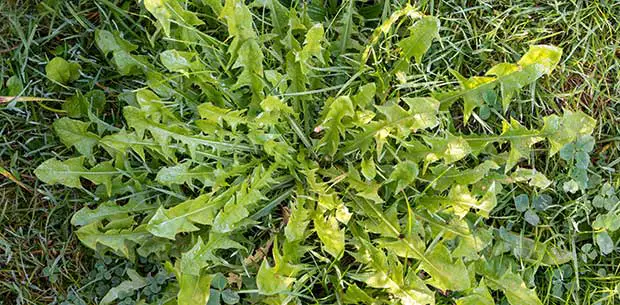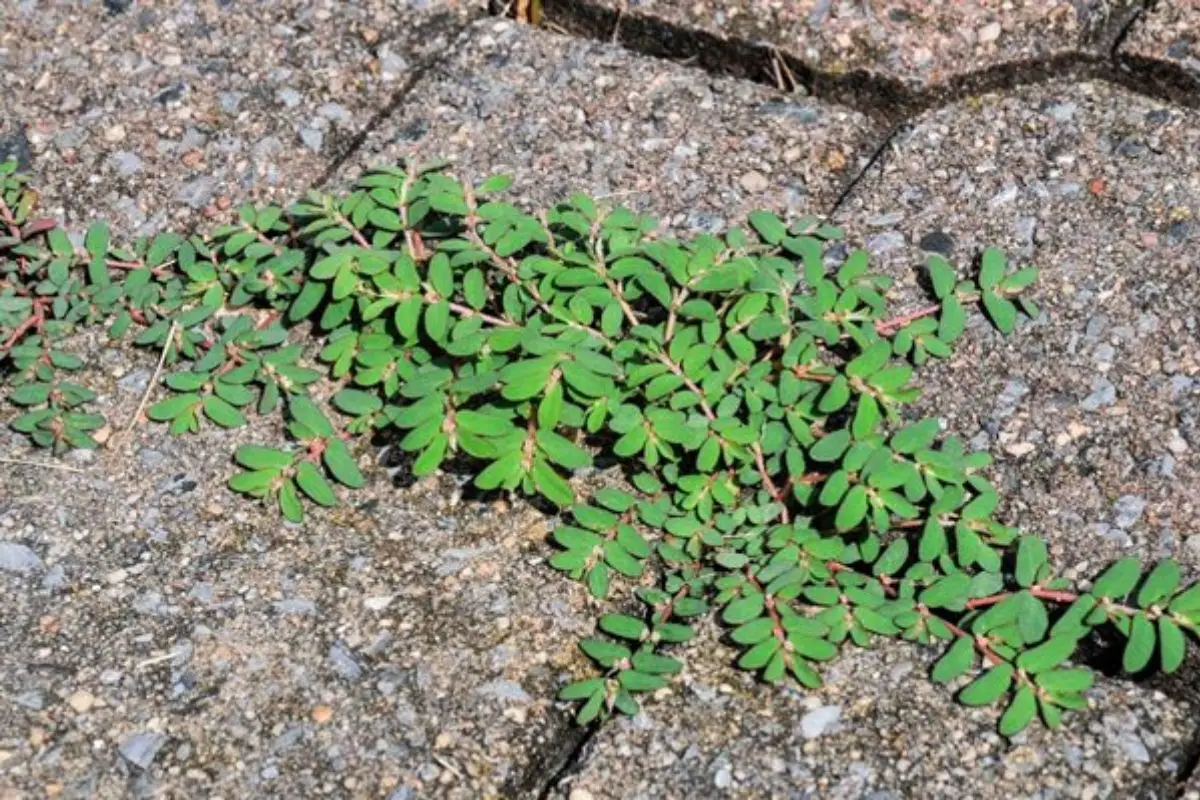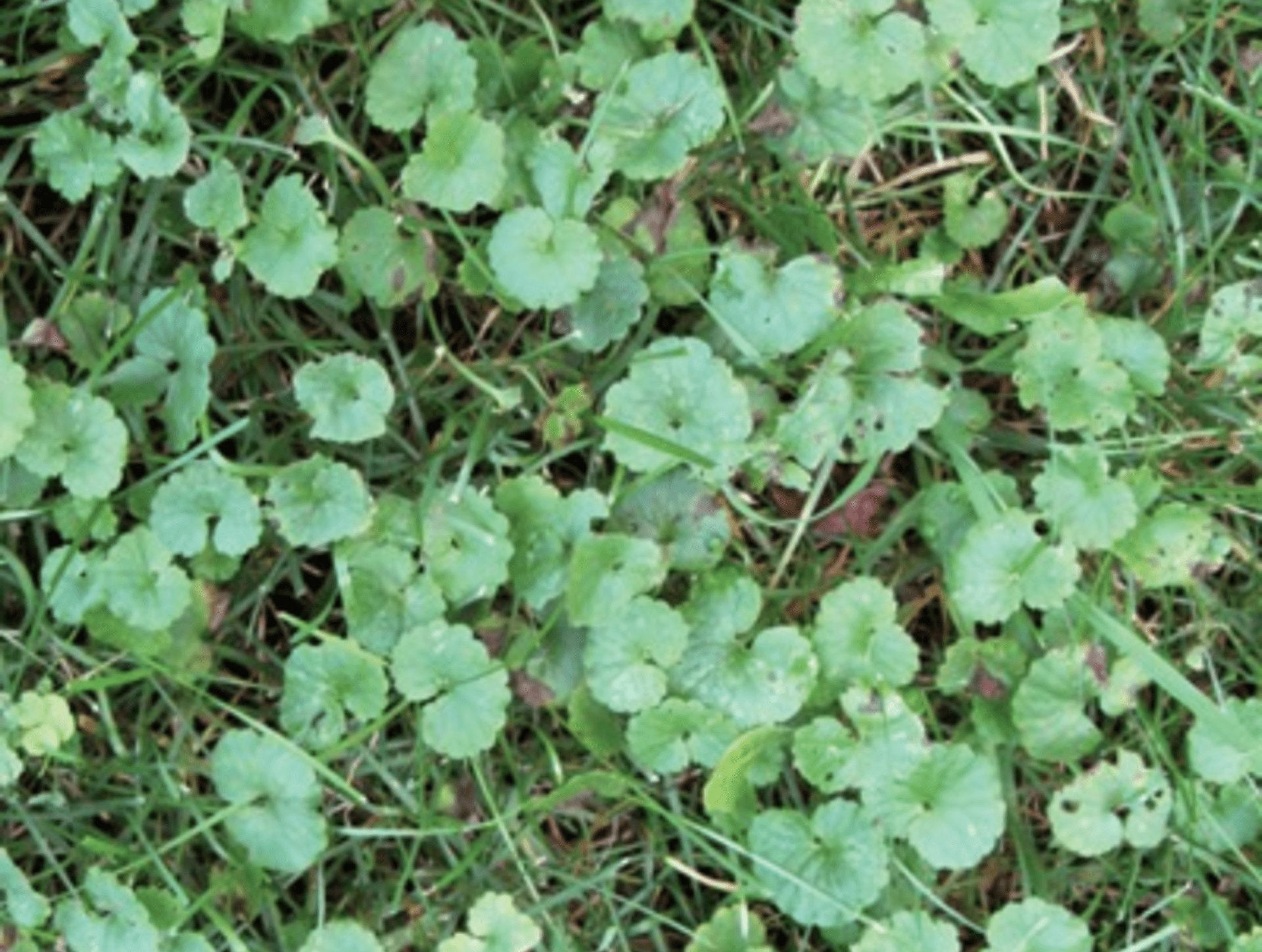Sign Up For Our Newsletter
- Mow your grass when it needs it one-third above the ideal cutting height.
- Pro Tip: If you dont know your grass type, take a plug of turf to a garden center and ask the staff to help with the identification.
Cool Climate Grasses
- Bent grass: 1/4- to 3/4-in.
- Chewing hard or red fescue: 1-1/2 to 2-1/2-in.
- Tall fescue: 1-1/2 to 3-in.
- Kentucky bluegrass: 1-1/2 to 3-in.
- Perennial ryegrass: 1-1/2 to 3-in.
Warm Climate Grasses
- Bahia grass: 2- to 3-in.
- Bermuda grass: 1/2- to 1-in.
- Blue grama grass: 2- to 3-in.
- Buffalo grass: 2- to 3-in.
- Carpetgrass: 1- to 2-in.
- St. Augustinegrass: 1- to 3-in.
- Zoysia grass: 1/2- to 1-in.
How Do I Get Rid Of Broadleaf Weeds That Are Invasive And Difficult To Control
If the weed is deeply rooted, it may be impossible to pull it out with a single application of weed killer. A more invasive weed, one that grows close to the surface, will often need to be dug up and removed. Some invasive weeds, such as crabgrass, are completely immune to herbicides.
Other broadleaf weeds, such as bluegrass, need to be mowed low for them to become an issue.
How To Get Rid Of Burr Weeds From Your Yard
Nobody likes having burr weeds in their yard. The spiky balls they leave in your grass are a painful surprise for bare feet. And theyre a nuisance when they stick to clothes and animal fur.
Burr weeds can quickly take over your yard if you leave them. The spiky burrs are actually seed pods, and the weed easily spreads. But they can be difficult to eradicate.
So in this article, Ill show you how to get rid of burr weeds. And how to keep them away once youve killed these annoying plants.
Don’t Miss: Murray Serial Number
Pull Weeds Out By Hand
If you dont know how to get rid of weeds on the lawn, you can always use the old-fashioned way to get rid of them: pulling them out by hand.
Some common lawn weeds may sprout from any roots left in the ground therefore, its essential to remove the root altogether.
To avoid accidentally distributing seeds elsewhere, you need to wear a particular pair of gardening gloves for the job.
Old Shower Curtains And Carpet Samples

Want to lay down a weed barrier but dont want to spend money on store-bought landscape fabric? Why not repurpose your old shower curtains and carpet samples?
Both create dense, non-permeable barriers that will smother weeds and prevent light and air from reaching them. Use both exactly the way youd use landscape fabric or newspaper laying them around plants you want to protect and covering with mulch or gravel.
Read Also: Troy-bilt Flex Mower Attachment For Sale
Go Slow On Digging And Tilling
In the past, I thought that digging and tilling more made the lawn better. Surprisingly, this is not the case. As much as digging and tilling are essential, overdoing it might be creating favorable conditions for weeds to grow.
Letâs picture it this way. Every time you turn over the soil, you bring new weeds seeds on the surface. The closer they are to the surface, the better the conditions are for growth.
You can practice the no-till gardening method which is less invasive. This method can help improve soil structure and enhance fertility.
How To Kill Grassy Weeds In Lawns
Crabgrass, goosegrass and yellow foxtail are grassy weeds that are on the most wanted list for being troublesome in Central and Southern Maryland. You definitely want to get rid of these weeds.
Crabgrass is the monster of all lawn weeds. It takes extreme advantage of thin or stressed lawns where it can wiggle its way in and then flourish. Lawns without enough water, adequate nutrition or drainage are prime targets.
And once crabgrass gets in, it becomes aggressive. When thick crabgrass patches form, they choke out desirable grass. Then when crabgrass dies out, it leaves thin, bare areas that just fill in with more weeds later on. Each plant can actually produce over 75,000 seeds, so the problem can continue to escalate year after year.
Goosegrass is a summer annual weed that grows well in compacted and poorly draining soil and looks a lot like crabgrass. In fact, these two weeds are often mistaken for one another. Goosegrass usually pops up in areas of the lawn that have been mowed too short. This weed also prefers compacted soil, so aeration could help get rid of this weed.
Foxtail is smaller than crabgrass and goosegrass and can be found in both moist and dry soils. Its wide, flat leaves also look a bit like crabgrass until its seed heads form in the summer.
All three of these grassy summer annual weeds germinate in spring and summer and are killed by autumns frost. As they grow, they produce seed heads, which result in next years weeds.
Read Also: How To Kill Wild Violets In Yard
How To Kill Weeds Naturally: A Complete Guide
The Pests Stop Here!
Every homeowner knows the feeling: you walk into your yard ready for some rest and relaxation.
Instead, you see weeds.
Theyre popping up through the cracks in your pavers, invading your garden beds, and rearing their ugly heads in your lawn. Youve tried everything to get rid of weeds forever, and youre starting to get discouraged.
Dont worry, though. Theres hope.
Here at Smiths Pest Management, we provide comprehensive natural weed control as part of our lawn care services to Bay Area homes and businesses, so we know its possible to get rid of weeds with natural deterrents.
In this post, well discuss how to kill weeds naturally, and what steps you can take to get the weed-free outdoor space you want.
Lets dive in.
Natural Methods To Get Rid Of Common Garden Weeds
FREE WEEKLY NEWSLETTER: Plants, Design Ideas, Gardening Solutions & More!
With so much controversy surrounding the use of chemical weed killers, especially those containing glyphosate, many gardeners are turning to more organic and natural weed control methods to deal with weeds even if it means more work. If you would like to get rid of weeds without harsh chemicals, here are 10 ways to knock them out.
Common weed killers to try:
Stand-up weeding tool. Photo by: Jari Hindstroem / Shutterstock.
Recommended Reading: Milorganite Vs Ecoscraps
Natural Methods For Weed Removal In Your Lawn
Many people nowadays are looking to natural methods to cure weed issues rather than using chemicals.
There is a natural remedy made with vinegar, salt and regular dishwashing liquid.
Vinegar has been known to be a natural weed killer by killing the plant above ground.
It needs to be a strong vinegar, at least 10-20% acetic acid. Place this into a spray bottle.
Next, take any regular dishwashing liquid and place a few drops into the vinegar.
This acts as a way to break up the vinegar so it can be absorbed more easily.
This should be placed directly onto weeds in areas that you would like the soil to remain usable even after removing these weeds.
If there is an area in which you would like to kill everything no matter what the case, then take a slightly different approach.
You should take a gallon of the same vinegar, and place in 2 cups of table salt or any other type of salt that can be bought at any grocery store.
Mix extremely well and add about a teaspoon or a few drops of the same dishwashing liquid.
Either pour or spray this onto the area of weeds and plants you would like to kill, and you should never have any issues with weeds growing here ever again as the salt will essentially sterilize the soil.
Use A Mixture Of Salt Vinegar And Dish Soap
Vinegar contains acetic acid, and salt has sodium chloride. When mixed, they draw moisture from weeds.
Dish soap will work as a surfactant. It will reduce the surface tension that will cause the mixture to bead on the leaves instead of the plant absorbing it.
You will only need a gallon of white vinegar, a cup of table salt, and a tablespoon of dishwashing soap. Mix the ingredients and spray directly on the weeds.
The best time of using this method is during a warm sunny day.
Recommended Reading: Lowes 0 Turn Lawn Mowers
Control Of Broadleaf Weeds In The Lawn
Dandelion, plantain, and white clover are common perennial broadleaf weeds in lawns. Broadleaf weeds in lawns can be removed manually by pulling and digging or destroyed with broadleaf herbicides.
In small areas, some weeds can be controlled by pulling and digging. This method is best accomplished after a heavy rain or deep watering. Unfortunately, pulling and digging is often ineffective on deep-rooted weeds.
In many situations, herbicides are the only practical method of weed control. Effective broadleaf herbicides include 2,4-D, MCPP, and dicamba. The most effective broadleaf herbicide products contain a mixture of 2 or all 3 of these compounds. Combination products control a wider range of broadleaf weeds than a single compound. For example, 2,4-D does an excellent job on controlling dandelions, but is relatively ineffective against white clover. MCPP, on the other hand, provides excellent control of white clover and only fair control of dandelions. Products containing 2,4-D and MCPP effectively control dandelions and white clover. Triclopyr is another broadleaf herbicide. It is typically used on hard-to-kill broadleaf weeds.
This article originally appeared in the August 24, 2001 issue, pp. 106-107.
Dont Spread The Solution Too Close To Plants

The herbicide is used to get rid of broadleaf weeds, but gardeners can accidentally spread it too close to shrubs and other trees. Dont rush this process. Take your time to achieve a worthy result.
Choose a day when youll have plenty of time to focus on this process. Your efforts will be in vain if the result is destroying other plants, flowers, and shrubs youve worked hard to maintain.
Also Check: Peat Moss Grass Seed
How To Get Rid Of Creeping Woodsorrel
What it looks like: Also known as Oxalis, this weed has a purple hue and has sets of three heart-shaped leaves. The stems are hairy and they have bright yellow flowers that emerge in the spring.
Where it typically grows: Creeping woodsorrel prefers growing in shade instead of full sun.
How it spreads: The Oxalis plant spreads through its creeping stems and extensive root systems. Its flowers also release seeds that sprout new plants.
Best ways to get rid of it: A weed killer that targets broadleaf weeds like Ortho Weed B Gon Weed Killer works well to get rid of this plant.
Diy Weed Control Solutions
Removing weeds manually can be a daunting process if you have a large lawn. It takes time and might not even be as easy as it sounds. But, the weeds need to go regardless of whether you have the time to do it or not.
The good thing is that you can still enjoy the convenience of spraying herbicides without using chemical solutions.
You can use homemade solutions with readily-available items from your pantry, such as:
A Vinegar Salt Mix
Vinegar alone is useful to get rid of weeds on a small lawn. It is even better when mixed with salt and regular dish soap.
This recipe, one-gallon white vinegar, one cup salt, and one tablespoon salt is an example of a homemade weed control mix.
Soap
Chemically, soap contains a significant amount of oil. This oil breaks down the waxy and hairy surface of weeds after spraying. F
or even better results, you can add a few drops of vinegar to help the soap stay on longer and suffocate the leaves.
A Vodka Mix
If you have a bottle of vodka lying in your pantry, you can make use of it to kill weeds in your lawn. You can use one ounce of vodka, two cups of water and a few drops of dish soap to create a weed-control solution.
When using this solution, be careful not to overdo it and risk destroying the plants. Vodka is quick to dry the leaves and might result in more harm than good if overused.
Corn Gluten Meal
This is quite a surprise, right? You can use corn gluten meal to suffocate weeds in your lawn.
Boiling Water
Also Check: Expert Gardener Crabgrass Preventer Plus Fertilizer
Selecting The Best Weed & Feed For Your Lawn
When choosing the best weed & feed product for your lawn, keep two considerations in mind: your lawn’s grass type and the weeds you want to kill. Always make sure the product label lists your specific grass, such as Kentucky bluegrass or Bermudagrass, and your targeted weed types.
Pennington UltraGreen Weed & Feed 30-0-4 starts working on contact to kill more than 250 weeds down to the root, while supplying your lawn with nutrients for quick greening and extended feeding that lasts up to three months. This premium weed & feed product suits common northern grasses and most southern grass varieties, too.
For southern lawns, Pennington UltraGreen Southern Weed & Feed 34-0-4 provides quick greening and extended feeding, plus it kills and controls new lawn weeds for up to three months. Both these weed & feed products include the same high-quality nutrients that help make Pennington UltraGreen products the best lawn fertilizers for your lawn.
Some weed & feed herbicides can injure specific varieties of grasses, especially centipede and St. Augustine grasses, so it’s important to understand where your product can be used. Pennington UltraGreen Southern Weed & Feed 34-0-4, formulated specifically for these grass types, controls more than 44 broadleaf and grassy weeds in centipede and St. Augustine lawns. Plus, it prevents crabgrass, paspalum and spotted spurge as well.
Creeping Charlie Lawn Weed
Creeping Charlie
Creeping Charlie is a common lawn weed that spreads across lawns and can be difficult to remove altogether. Also called ground ivy, this aggressive creeping weed has shallow roots and pulls out easily from the ground.
Lawn Weed Identification: Creeping Charlie is identified by its scalloped leaves with serrated margins, delicate lilac flowers, and creeping stems that root almost anywhere.
Lawn Weed Control Tips: Pull out the invasive stems by hand to remove the plant from lawns. You can also pour a borax solution to destroy this weed without harming your lawn. Dissolve 5 tsp. of borax in a quart of water and apply evenly to 25 sq. ft. of lawn.
Don’t Miss: Why Do Raccoons Dig Up Lawns
Australian Lawn Weeds Distribution By Area
Now that weve covered the most common weeds in Australia, its time to talk a little bit about in which parts of the country you can find them in. To make things easier for you, weve categorised the above-mentioned plants by state, so that you can double-check which weeds grow in your area. Ok, lets start with
- Queensland bindii, nutgrass, crabgrass, winter grass, penny weed, carrot weed, and creeping oxalis
- Western Australia clover, crabgrass, thistle, catsear, and chickweed
- South Australia winter grass, thistle, nutgrass, catsear, and chickweed
- New South Wales bindii, nutgrass, crabgrass, penny weed, white clover, carrot weed, and creeping oxalis
- Victoria dandelions, winter grass, penny weed, white clover, carrot weed, and creeping oxalis
- Tasmania clovers, winter grass, dandelion, carrot weed, and creeping oxalis
Common Types Of Lawn Weeds
Just to have a bit of background knowledge, it is good to be able to identify the three main weed types, Broadleaf, Grassy and Grass-type.
Broadleaf have big flat leaves that do not look like grass or needles.
One famous broadleaf weed would be a dandelion, but black medic is another broadleaf weed you may encounter as well.
Grassy weeds can be deceiving because of their similar look to actual grass.
They grow in the same manner as grass as well.
Foxtails and crabgrass are two common types of grassy weeds.
Finally there are grass-like weeds which, again, are similar to real grass and grassy weeds as well.
The difference between grass-like and grassy weeds are that grass-like weeds can look more like a tube, and are not flat.
Wild onion and wild garlic are two well known grass-like weeds.
Don’t Miss: Allyn Hane Net Worth
How To Get Rid Of Yellow Nutsedge
What it looks like: Nutsedge has long, thin stems and clusters of grass-like leaves that burst out horizontally. Light brown flower spikelets grow between its leaves.
Where it typically grows: Nutsedge can grow anywhere but it mainly prefers moist soil.
How it spreads: Nutsedge produces seeds, but it predominantly spreads through underground tubers or rhizomes, which are horizontal underground stems.
Best ways to get rid of it: The best killer for nutsedge is Bonide Sedge Ender Nutsedge & Crabgrass Killer, which kills and prevents nutsedge weeds from growing.
Lawn Weed Removal & Maintenance

If your weed problem is either just getting started, or you recently cleared out all the weeds and have a few coming back, it is important to maintain the weeds as they first come up.
Keeping your lawn well-watered, properly fertilized, and at a proper length are all ways to keep weeds at bay.
Specifically for dandelions, it is important to keep an eye out and pull them out before they seed.
These weeds famously will show you they are in their seeding period when their yellow flower changes into 15,000 seeds in a pouf on top.
Make sure to pull the plant out by the root and remove all root pieces from the grown if possible.
Also Check: Talpirid Home Depot
